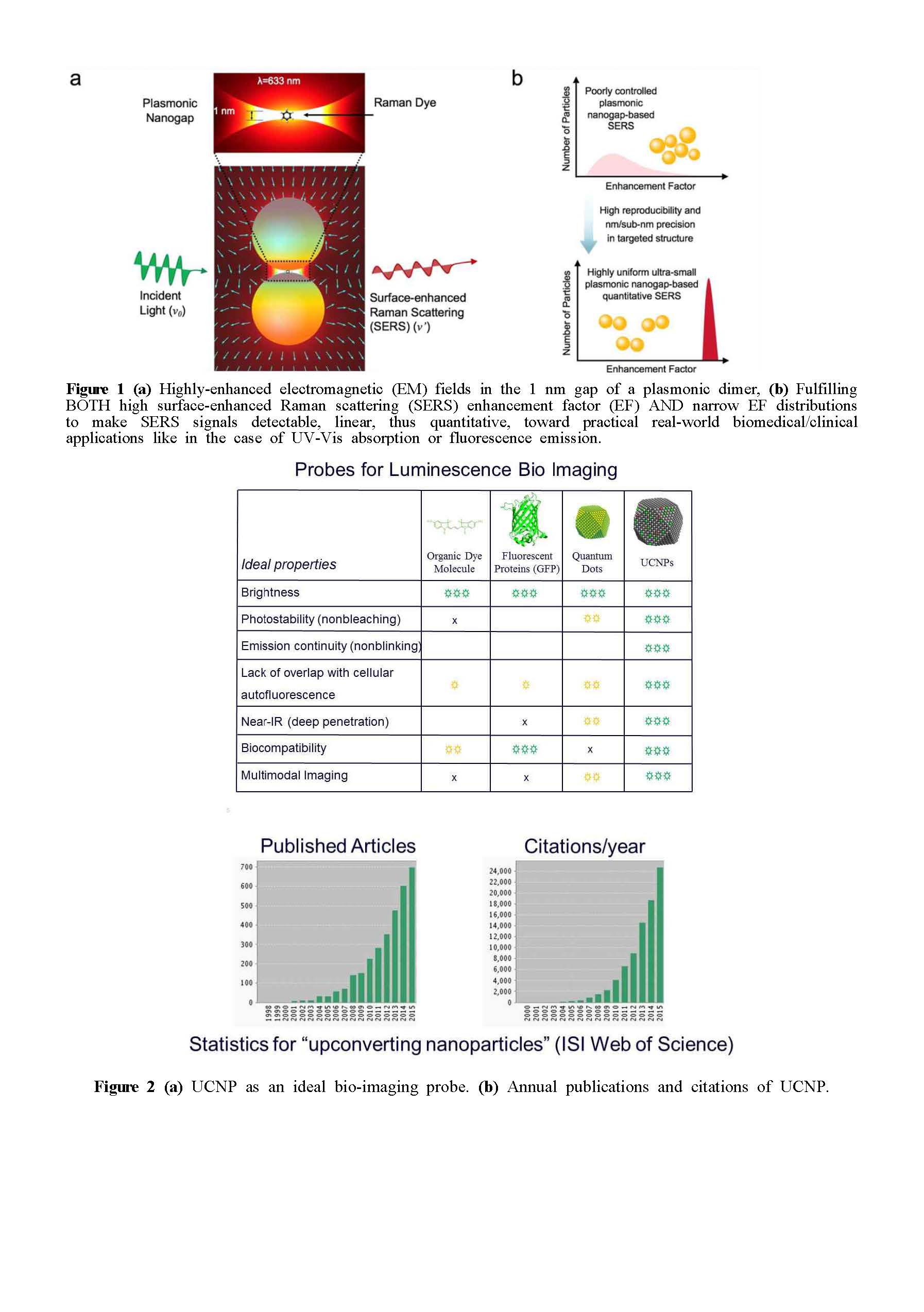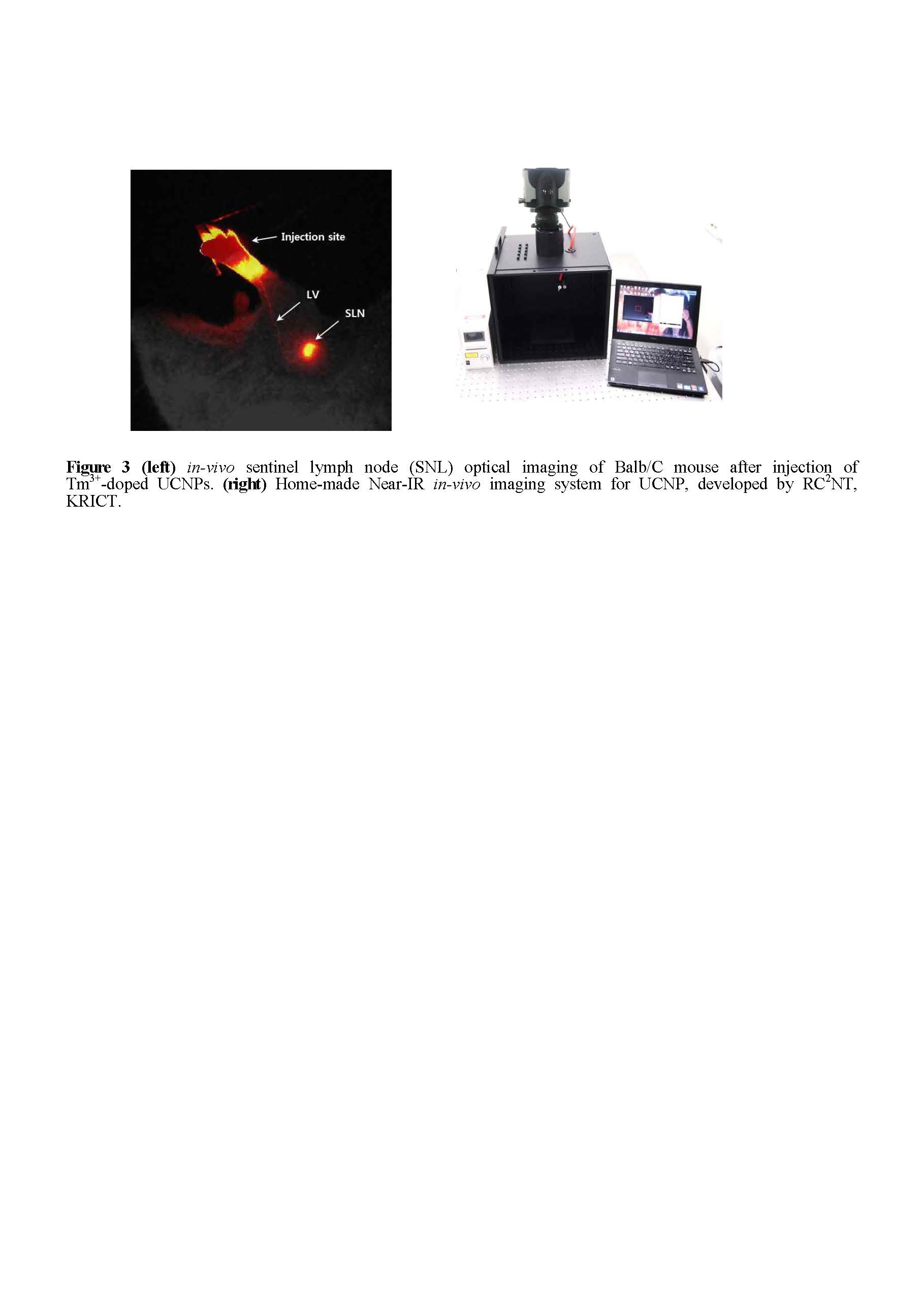| 초청강사 | Dr. Yung Doug Suh |
|---|---|
| 소속 | 1 Research Ctr. for Convergence NanoRaman Tech. (RC2NT), KRICT, DaeJeon, Korea, 2 School of Chemical Engineering, SungKyunKwan University (SKKU), Suwon, Korea. |
| 일시 | 2018년 3월 29일 (목) 오후 5시 |
| 장소 | 아산이학관 331 |
Raman scattering can provide a wealth of molecular chemical information, but it is basically a highly inefficient inelastic light scattering process between photon and molecule with a very small cross-section. Raman scattering signals are often poorly reproducible, meaning that very strong and controllable amplification mechanism, such as SERS(Surface-Enhanced Raman Scattering), TERS(Tip-Enhanced Raman Sccatering), or NERS(Nanogap-Enhanced Raman Scattering), is needed to obtain measurable and reliable signals [1-2].
Started from the simple wet-chemical nanogap generation induced by Coulomb aggregation among colloidal nanoparticles in aqueous solution after adding salt onto it shown independently by S. Nie and K. Kneipp in 1997, nanogap engineering to enhance Raman scattering signal to achieve single molecule sensitivity is getting more sophisticated [1].
Plasmonically coupled metallic nanostructures with ultra-small (∼1 nm or smaller) nanogaps can generate very strong and controllable electromagnetic fields that can generate strong NERS signals from Raman dyes inside the nanogap. Therefore, plasmonic nanogap-enhanced Raman scattering (NERS) can be defined as Raman scattering signal enhancement from plasmonic nanogap with ∼1 nm gap size.
In this talk, I will overview recent breakthroughs, advances, application, and prospects of plasmonic nanogap-enhanced Raman scattering with metal nanogap particles revealed by single-molecule/single-particle-level Nano Raman spectroscopy showing that these plasmonic nanogap particles can generate ultra-strong, quantifiable Raman signals in a highly reproducible manner. Specifically, single molecule Surface-Enhanced Raman Scattering (smSERS) field formed since 1997 will be briefly reviewed [1] and then different types of nanogap engineering strategy for smSERS developed in my lab will be discussed: single-junction 0-D external nanogap between two spherical nanoparticles connected with a double helix DNA [3-6], multi-junction 3-D spherical nanogap internally formed between spherical gold core nanoparticle and spherical gold shell nanoparticle connected by multiple single helix DNAs [7], and 2-D nanogap arrays formed on a 4-inch polymer wafer by simple two-step process. Several reasons will be discussed why now SERS regime and NERS (Nanogap-enhanced Raman Scattering) regime should be separated on the enhancement factor (EF) distribution histogram. Recent result including direct near-field visualization of the nanogap field of the 2-D nanogap array, single molecule behavior of cytochrome C protein’s Raman signal, and ultra-uniform distribution of SERS enhancement factor (EF) of benzene thiol molecule dispersed on this plasmonic 2-D nanogap array wafer will be presented [8]. In the latter part of my talk, I will briefly overview another research field of my research group, “Live Cell & in vivo Imaging based on UCNPs (Up-Converting Nano Particles)”, which is a main topic of recently awarded GRL(Global Research Lab) Project of NRF(National Research Foundation), Korea, working with Columbia University [9-12].
References
[1] H. Lee, S.M. Jin, H.M. Kim, and Y.D. Suh*, Phys. Chem. Chem. Phys. (invited review article), 15, 5276 (2013). cited > 50 times
[2] J.-M. Nam*, J.-W. Oh, H. Lee, and Y.D. Suh*, Acc. Chem. Soc., 49, 2746 (2016)
[3] R.M. Stoeckle, Y.D. Suh, V. Deckert*, and R. Zenobi*, Chem. Phys. Lett., 318, 131 (2010). cited > 1,140 times
[3] D. Lim, K.-S. Jeon, H.M. Kim, J.-M. Nam*, and Y.D. Suh*, Nature Materials, 9, 60 (2010). cited > 730 times.
[4] J.-H. Lee, J.-M. Nam*, K.-S. Jeon, D.-K. Lim, H. Kim, S. Kwon, H. Lee, Y.D. Suh*, ACS Nano, 11, 9574 (2012). cited > 80 times
[5] H. Lee, J.-H. Lee, S.M. Jin, Y.D. Suh*, and J.M. Nam*, Nano Letters, 13, 6113 (2013) cited > 40 times
[6] H. Lee, G.-H. Kim, J.-H. Lee, N.H. Kim, J.-M. Nam*, and Y.D. Suh*, Nano Letters, 15, 4628 (2015).
[8] D. Lim, K.-S. Jeon, J.H. Hwang, H.Y. Kim, S.H. Kwon, Y.D. Suh*, and J.-M. Nam*, Nature Nanotechnology 6, 452 (2011). cited > 540 times.
[9] H. Lee, J.H. Yoon, S.G. Park*, Y.D. Suh* et al., to be published.
[10] Y.I. Park, K.T. Lee, Y.D. Suh*, and T. Hyeon*, Chem. Soc. Rev., 44, 1302 (2015). cited > 210 times
[11] S.H. Nam, Y.M. Bae, Y.I. Park, J.H. Kim, H.M. Kim, J.S. Choi, K.T. Lee*, T. Hyeon and Y.D. Suh*, Angew. Chem. Int. Ed. 50, 6093 (2011). cited > 140 times.
[12] H.J. Seo, S.H. Nam, H.-J. Im, J.-y. Park, J.Y. Lee, B. Yoo, Y.-S. Lee, J.M. Jeong, T. Hyeon, J.W. Kim, J.S. Lee, I.-J. Jang, J.-Y. Cho, D.W. Hwang*, Y.D. Suh* and D.S. Lee*, Sci. Report 5, 15685 (2015)
[13] H.S. Park, S.H. Nam, J. Kim, H.S. Shin, Y.D. Suh* and K.S. Hong*, Sci. Report 6, 27407 (2016)
[14] J. Kim, Y.J. Lee, S.H. Nam, D.-K. Lim* and Y.D. Suh*, to be published.



